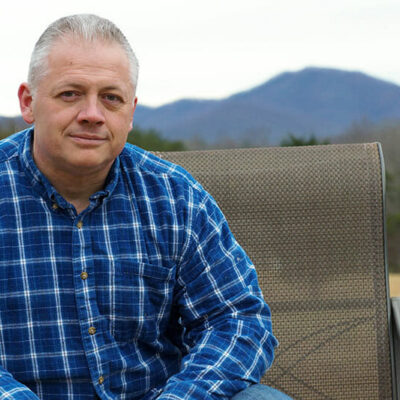Plans to convert the Blue Ridge Tunnel into a hiking trail through Afton Mountain may have gotten a boost April 3, when Representative Tom Perriello asked the House Appropriations Committee to earmark $4.36 million for the project in fiscal year 2010.
|
To construct the Blue Ridge Tunnel, which could see new life as a walking trail, Irish workers hand-drilled or chiseled holes into the granite, poured in black powder, and backed off. They carted off the debris, often with the help of leased slaves, shored up the ceiling, and kept digging—for seven years. |
Nelson County acquired the railroad tunnel from CSX Corporation in fall 2001. When Perriello solicited ideas for projects from his district, Nelson County put forth the rail-to-trail conversion. Perriello forwarded that request with 50 others, from broadband access to education and upgrading the water infrastructure. Perriello’s press secretary Jessica Barba explained, “Counties made their priorities clear to the Congressman, and he made them clear to the Appropriations Committee. He focused on projects that would create or attract jobs to the area.” The Blue Ridge Tunnel trail would do that and draw tourists by linking the Appalachian Trail and Blue Ridge Parkway with trails planned from Staunton to Charlottesville.
The tunnel first boosted Virginia’s economy when it opened April 13, 1858, connecting the Ohio River valley with eastern seaports. Nearly 4,300 feet long, the tunnel was the world’s longest at the time.
The American Society of Civil Engineers designated the tunnel a Historic Civil Engineering Landmark in 1976 because it “represents the culmination of civil engineering technology based on manual drilling methods.” Stated less genteelly, Irish workers hand-drilled or chiseled holes into the granite, poured in black powder (dynamite had yet to be invented), and backed off. They then carted off the debris, often with the help of leased slaves, shored up the ceiling, and kept digging—for seven years.
Work slowed for accidental explosions, rockslides, skirmishes between Catholics and Protestants, strikes, and cholera. Local historian William Middleton notes that the two ends of the tunnel approached each other at an average rate of 26.5 feet per month and a cost of $114 per foot. In contrast, the parallel tunnel that replaced the Blue Ridge Tunnel proceeded at one foot per hour from 1942-44.
Without Claudius Crozet, however, the tunnel would have gone nowhere. Crozet left Napoleon’s army after Waterloo and taught at West Point. He hoped to join the University of Virginia faculty in 1823, except construction wasn’t finished yet on the school. Crozet, likely with Jefferson’s help, was instead appointed principal engineer of the Virginia Board of Public Works.
One of four tunnels on the Blue Ridge Railroad, Crozet’s masterpiece sloped slightly so water would drain to the east while smoke from the trains would rise out the west. During construction, though, smoke and water accumulated in the middle. Crozet designed a ventilation system for the gases and also made the world’s longest drainpipe, a cast iron brute 2,000 feet long. Spiting bets that the two ends of Crozet’s endeavor would never meet, the bores that broke through from opposite sides on Christmas Day, 1856, were less than an inch apart.
The tunnel served several railroads, including the C&O, as well as Stonewall Jackson, who marched his troops through it. Plans to store natural gas in the decommissioned tunnel led to the construction of internal concrete walls and pipes in the 1950s, but the project went no further. The tunnel has since attracted bats, water, rugged explorers, and local partiers.
Trail supporters would change that. According to Maureen Kelley, Director of Nelson County’s Economic Development and Tourism, construction can begin within 6 months of receiving funding. About $2 million would go first toward engineering assessments and stabilizing the rocks and replacing or repairing bricks lining sections of the tunnel. After that, trails could follow. A nonprofit organization has already been created to oversee the work, which could proceed in phases if needed.
C-VILLE welcomes news tips from readers. Send them to news@c-ville.com.






